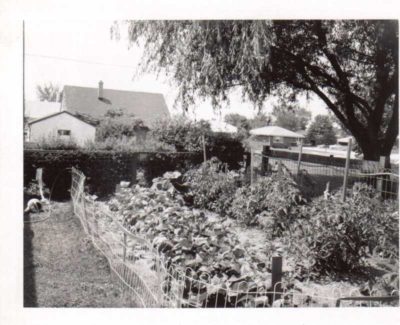Farming food for the homestead is a labor-intensive and time-consuming process, and you can’t afford to get it wrong.
The truth, though, is that every region has its own challenges to which those plants may not be perfectly adapted.
The solution? Annually selecting and saving seeds to breed a locally adapted landrace for the crops you want to grow can significantly increase your yields. This traditional method for growing food – used by our ancestors — establishes better food security and easier production. Plants that are adapted for the local growing season, local sunlight and precipitation patterns, and local pest and disease resistance will produce more food.
The seeds for landrace gardening come from the “survival of the fittest” – that is, the best-producing individual plants which also possess other desired qualities (like a good flavor!). Landrace varieties are adapted to thrive in a very local region; in fact, they’ll do best on the property where they are developed.
Looking For Non-GMO Seeds To Start Your Landrace Garden? Get Them From A Company You Can Trust!
Developing the landrace variety takes a few generations, but is well worth the effort. Follow these steps to start the process of breeding locally adapted landrace crops:
1. Plant several varieties of a crop close to one another. This ensures genetic diversity among the plants that grow, which will make a more sustainable landrace variety. Seeds from neighbors, if you can get any, already will be partially adapted, so plant them if you can.
2. Do not pamper your plants, but offer them mainly benign neglect. The plants that fare best despite weeds, local pests, and dry, wet, hot, or cold spells are the ones you want the most. The more you care for the plants, the harder it becomes to see which are really the fittest. That being said, some equal-opportunity watering or weeding to ensure you have a yield in early years is not a problem.
 3. Eat your fruits and vegetables and save seeds from the best plants. Make notes of why they were chosen and what the conditions were in your garden. Save seeds from multiple plants to preserve a variety of adaptations.
3. Eat your fruits and vegetables and save seeds from the best plants. Make notes of why they were chosen and what the conditions were in your garden. Save seeds from multiple plants to preserve a variety of adaptations.
Seamazing: The Low-Cost Way To Re-mineralize Your Soil
4. Maintain the genetic diversity of your plants in the following year by planting saved seeds alongside seeds from other sources. Even after landrace gardening is well-established, maintaining the garden in this way can ensure you don’t wind up with a single-allele crop (i.e. no diversity) which could result in a total crop failure if conditions change.
5. Continue to plant and save seeds yearly and update your records. It is crucial to understand the process by which you develop your landrace varieties, in case you need to go back a step and add the genetics of a different variety into the mix.
There’s a bit of the scientific method in landrace gardening, but don’t get intimidated. Continuous experimentation and careful selection will mean a sustainable future for your food crops. Within two to three years you will begin to notice the hardiness, resistance and productivity of your locally adapted varieties. Your garden will be easier to tend and will produce more. How can you argue with that?
What advice would you add on landrace gardening? Share your ideas in the section below:
Every Year, Gardeners Make This Stupid Mistake — But You Don’t Have To. Read More Here.
 Off The Grid News Better Ideas For Off The Grid Living
Off The Grid News Better Ideas For Off The Grid Living





